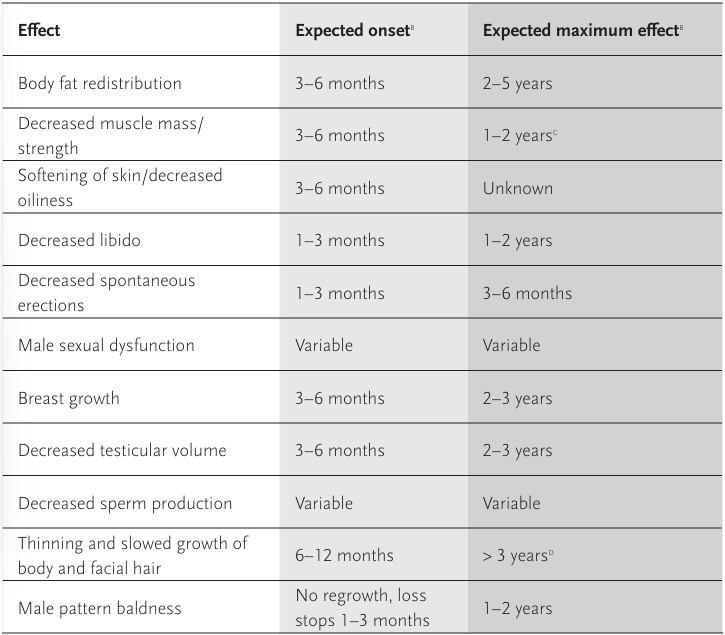MtF Replacement Hormone Effective and Risk
Feminizing hormone therapy will induce physical changes that are more congruent with a patient’s gender identity. In MtF patients, the following physical changes are expected to occur: breast growth (variable), decreased erectile function, decreased testicular size, and increased percentage of body fat compared to muscle mass.
Most physical changes, whether feminizing, occur over two years. The amount of physical change and the exact timeline of effects can be highly variable. This table outlines the approximate time course of these physical changes.
Table 1 shows the effect and expected time course of feminizing hormones

Source: WPAT version 7 page 38
The extent and pace of physical transformations are intricately tied to factors such as dosage, method of delivery, and the specific medications chosen, all of which are carefully tailored to align with a patient’s unique medical aspirations, be it shifts in gender expression or plans for gender affirmation. Remarkably, there's no current evidence to reliably forecast how an individual will respond to hormone therapy, save for the potential deepening of voice in female-to-male individuals. Age, body composition, ethnicity, or familial traits do not reliably predict treatment response. Under equal circumstances, there's no indication that any approved hormone type or administration method surpasses others in achieving desired physical alterations.
Risks of Hormone Therapy
All medical interventions carry risks. The likelihood of a serious adverse event is dependent on numerous factors: the medication itself, dose, route of administration, and a patient’s clinical characteristics (age, comorbidities, family history, health habits). It is thus impossible to predict whether a given adverse effect will happen in an individual patient.
The risks associated with feminizing hormone therapy for the transsexual, transgender, and gender-nonconforming population as a whole are summarized in Table 2.
Table 2 shows risks associated with hormone therapy bolded items are clinically significant
| Risk Level | Feminizing hormones |
|---|---|
| Likely increased risk |
|
| Likely increased risk with the presence of additional risk factors |
|
| Possible increased risk |
|
| Possible increased risk with the presence of additional risk factors |
|
| No increased risk or inconclusive |
|
Source: WPAT version 7 page 41

